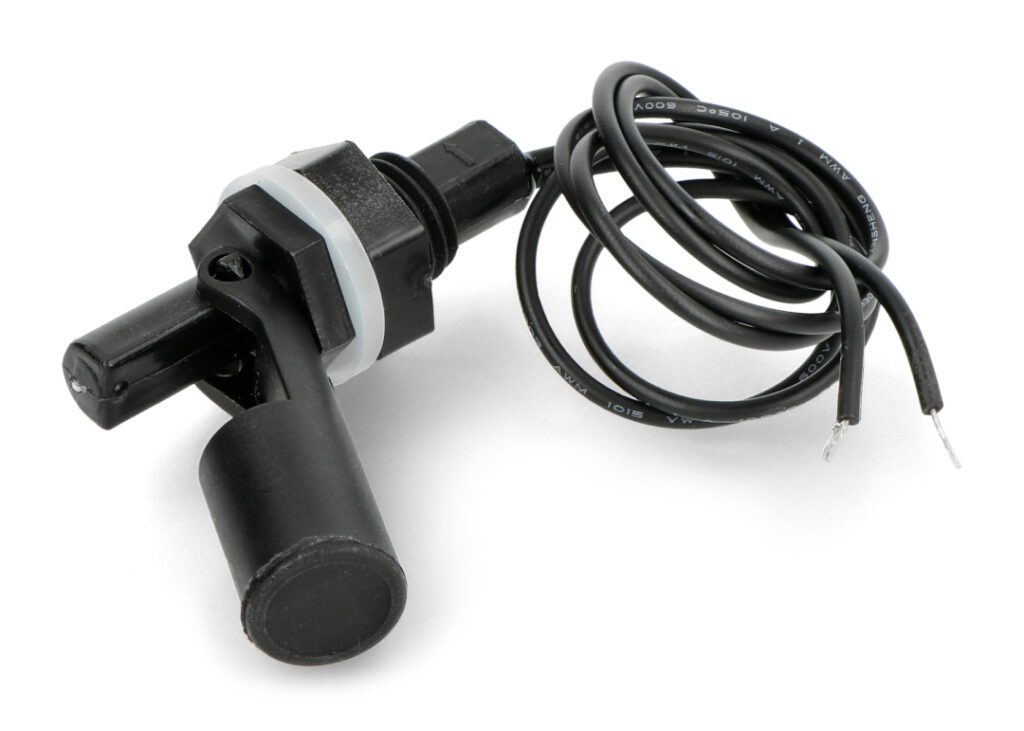Table of Contents:
Do you know how gas stations make sure we never run out of fuel, or how water treatment systems control the flow to ensure we have clean water every day?
The secret lies in precise monitoring – a task for which a device such as a liquid level indicator is perfect.
such a device as a liquid level indicator.
It’s a small component that often performs a very important task.
Do you want to use it in your project, combining the sensor with a minicomputer, for example?
Check first what exactly a liquid level indicator is, how it works and in what specific areas it is used.
What is a liquid level indicator?
Liquid level indicator is a device used to monitor and indicate the height of liquid in a tank or other container.
It can provide information both locally, directly on the device, and remotely, through control systems.
The primary function of indicators is to provide the data needed to control processes, prevent overflows, maintain optimum liquid levels in tanks, and in some cases to monitor consumption and manage inventory.
Although there are many types of indicators, they all operate on one of several basic principles: float, ultrasonic, capacitive, or pressure-based.
The choice of a particular technology depends on a number of factors, such as the type of liquid being measured, the required accuracy, environmental conditions, and cost.
What types of liquid level indicators can you find on the market?
We distinguish between several basic types of liquid level indicators, each with unique characteristics and suitable for specific applications:
- Mechanical indicators – the simplest in design and operation, often based on a float that moves with changes in the level of the liquid.
Their biggest advantage is reliability and simplicity, but they are not always suitable for precise measurements or work in aggressive environments. - Electronic indicators – use a variety of technologies, from resistance measurements to capacitance to the use of pressure sensors.
They are highly accurate and can be used in a wider range of conditions, but tend to be more expensive than mechanical counterparts.
- Ultrasonic indicators – work on the principle of reflection of ultrasonic waves from the surface of liquids.
They are extremely effective in difficult conditions, for example, when measuring corrosive substances.
They have no direct contact with the liquid being measured, which minimizes the risk of damage. - Capacitive indicators – involve measuring changes in electrical capacitance.
They are particularly useful for substances with high dielectricity, such as water. - Optical indicators – work by detecting changes in the properties of light as it passes through various media, such as liquid.
They use sensors that emit a beam of light – often infrared – and a detector that records the amount of light received.
What can a liquid level indicator be used for?
Liquid level indicators are used in many different areas, from industrial applications to devices we all use every day.
Here are some examples:
1. monitoring of fuel level in tanks
Liquid level indicators are crucial in gas stations and vehicles, allowing you to keep track of the amount of available fuel.
This avoids situations in which the tank suddenly becomes empty, which is especially important in transportation and logistics.
2. management of water resources in irrigation systems
In agriculture, these indicators are used to monitor water levels in irrigation reservoirs, which is crucial for efficient crop irrigation.
This allows farmers to maximize water use.
3. control of liquid levels in household appliances
In everyday life, liquid level indicators are used in appliances such as coffee makers, washing machines and dishwashers to inform the user when water needs to be refilled or when the tank is overflowing.
4. industrial overflow protection
In the chemical or pharmaceutical sector, where safety is a priority, liquid level indicators prevent overfilling of tanks with various types of substances, which could lead to leaks and failures.
This is extremely important in processes where precise control of substance levels is crucial to quality and product safety.
5. hobby electronic projects
Liquid level indicators are often used in DIY projects, such as automatic plant watering systems.
Any electronics enthusiast can build a system that monitors the water level in a pot and automatically triggers irrigation when the level drops below a set minimum.
What to keep in mind when choosing a liquid level indicator?
Choosing the right liquid level indicator is crucial to the efficiency and reliability of monitoring and process control in a wide variety of applications.
To make the right purchase, consider several important factors.
First, it is necessary to understand the characteristics of the liquid to be monitored.
Different liquids (water, oils, chemicals, wastewater, etc.), require different measurement technologies due to their physical and chemical properties, such as viscosity, density, chemical aggressiveness or solid suspended solids content.
Another key aspect is the environment in which the indicator will operate.
Conditions such as extreme temperatures, pressure, humidity and the presence of corrosive substances can have a significant impact on the choice and durability of the indicator.
Another important element is to determine the requirements for measurement accuracy and data presentation.
Depending on your needs, you can choose between simpler solutions with a local analog indicator and more advanced digital devices that offer remote monitoring and integration with a microcomputer, for example.
How useful was this post?
Click on a star to rate it!
Average rating 0 / 5. Vote count: 0
No votes so far! Be the first to rate this post.




















